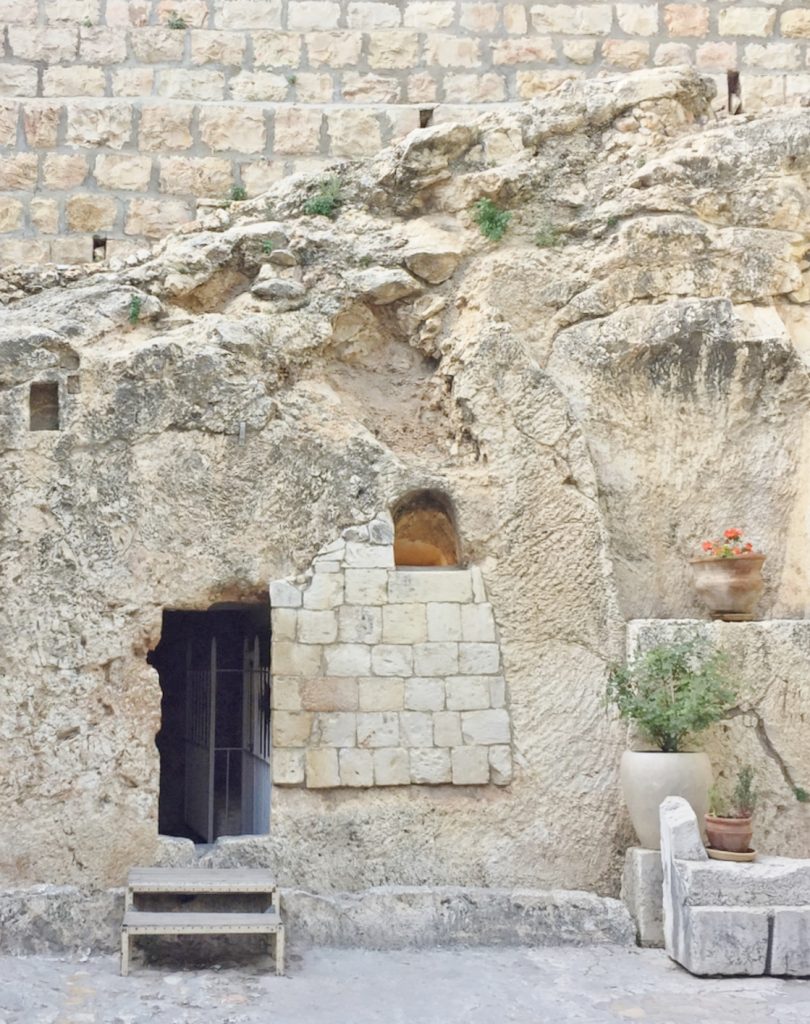
“He is Risen! He is Risen Indeed!” This is the phrase that we announce in our church service on Easter Sunday in remembrance of Jesus’ resurrection. For Christians, there is extreme power in these words. With these words, there is a promise of the forgiveness of sins and the hope of everlasting life.
Growing up in a Christian church, I was familiar with the story having heard it for many years. I thought I understood the meaning of Jesus’ death and resurrection, but it wasn’t until I visited Israel that I gained a renewed appreciation of the events that took place on Calvary. Yet it was a visit to the Church of the Holy Sepulchre, considered the proposed site of Jesus’ tomb, that I learned about the burial practices of the Jews in the first century.
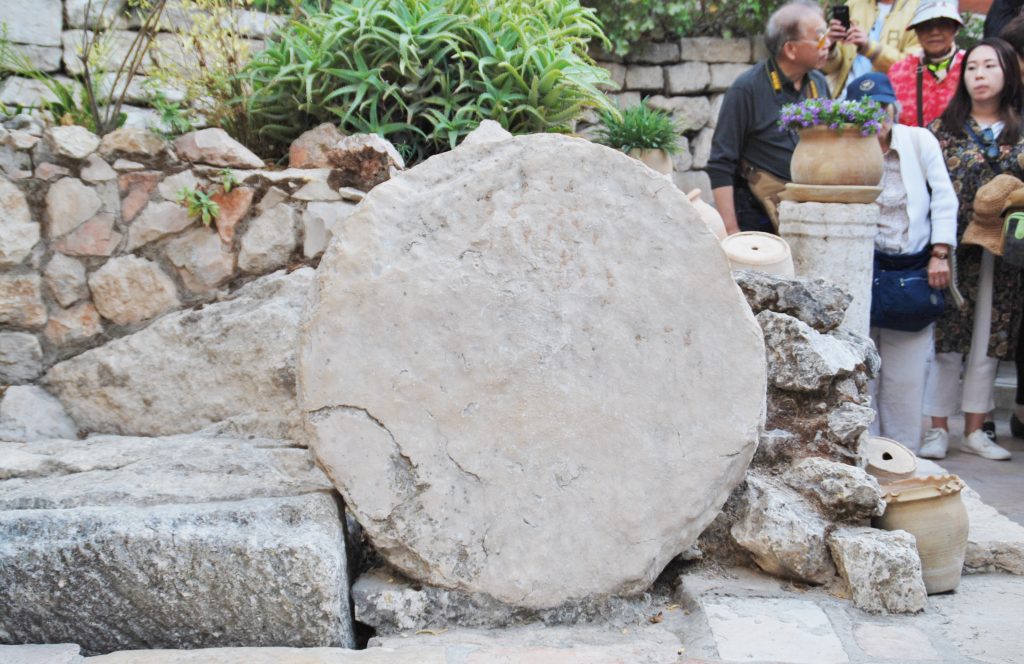
Jewish tombs became customary burial sites for the wealthier members of Jewish society starting in the 7th and 6th centuries BC. Hewn out of bedrock slopes, these carved rooms were designed to entomb family members over a number of generations. Inside, the bodies would be placed on rock cut benches the length of the body, with semicircular indentations for the head. Some would contain an additional shelf beneath the benches to shelter bones and offerings. After the body was placed inside, it would be sealed off by a stone slab to protect it from grave robbers and thieves.
While the Church of the Holy Sepulchre is built over Golgotha and has been the proposed site of Jesus’ tomb since Constantine, another location just outside of the city walls also claims to be the burial site of Jesus, known as the Garden Tomb.
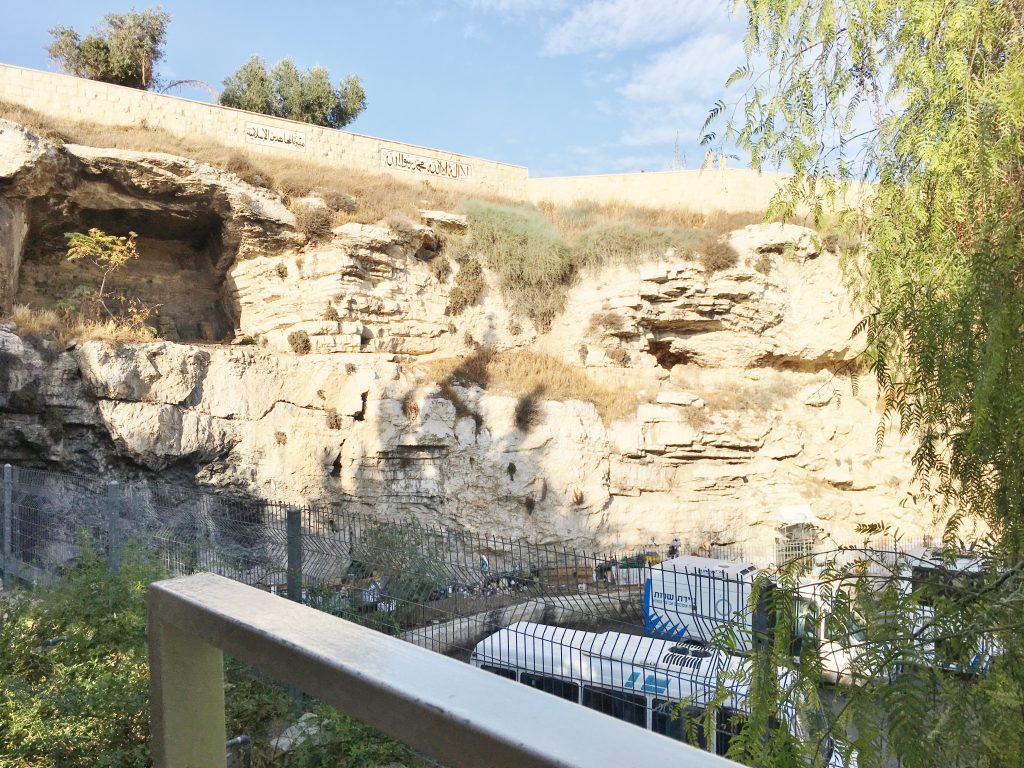
Unearthed in 1867, some Christians and scholars believe that the burial site is located at the Garden Tomb. Based on the Biblical account in Mark 15:22, “They brought Jesus to the place called Golgotha, (which means ‘the place of the skull’),” proponents of this thought have argued that this location is more likely to reflect the resemblance of a skull.
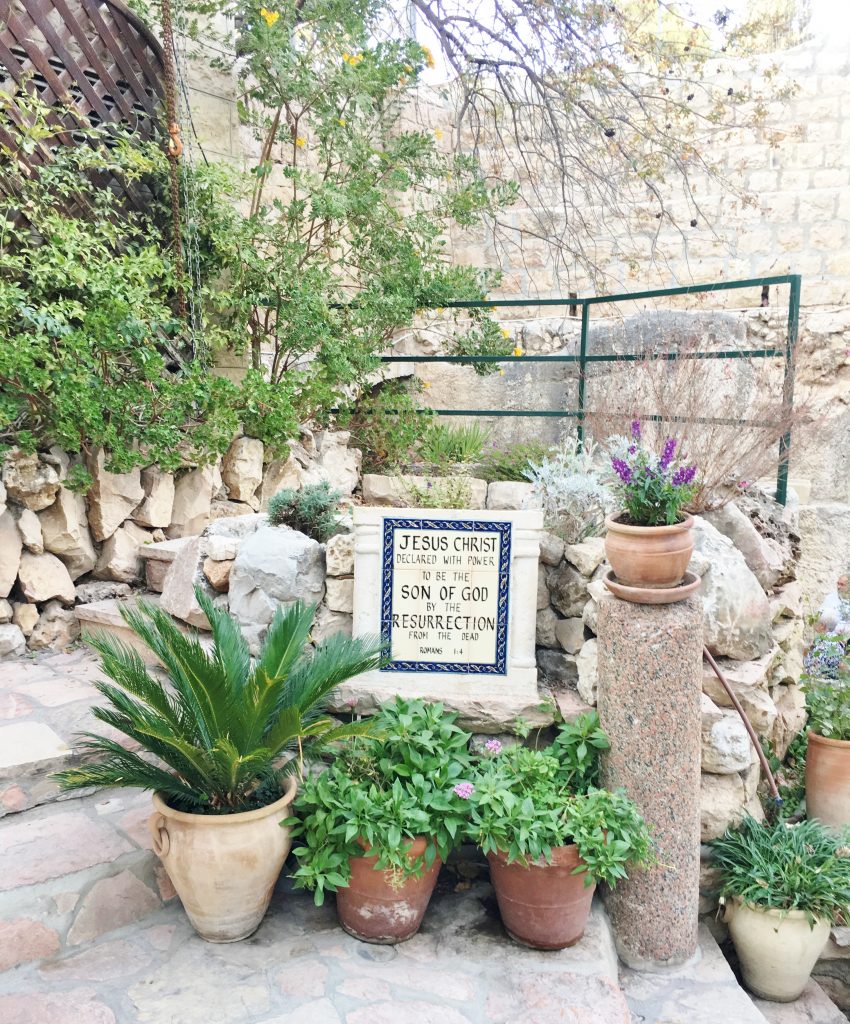
British General Charles George Gordon was a strong supporter of The Garden Tomb as the true burial of Christ, and began to debate his argument with archaeologists.
“I feel, for myself, convinced that the Hill near the Damascus Gate is Golgotha. … From it, you can see the Temple, the Mount of Olives and the bulk of Jerusalem. His stretched out arms would, as it were, embrace it: ‘all day long have I stretched out my arms’ [cf. Isaiah 65:2]. Close to it is the slaughter-house of Jerusalem; quite pools of blood are lying there. It is covered with tombs of Muslim; There are many rock-hewn caves; and gardens surround it. Now, the place of execution in our Lord’s time must have been, and continued to be, an unclean place … so, to me, this hill is left bare ever since it was first used as a place of execution. … It is very nice to see it so plain and simple, instead of having a huge church built on it.” —Charles George Gordon, Letters of General C. G. Gordon to his Sister M. A. Gordon
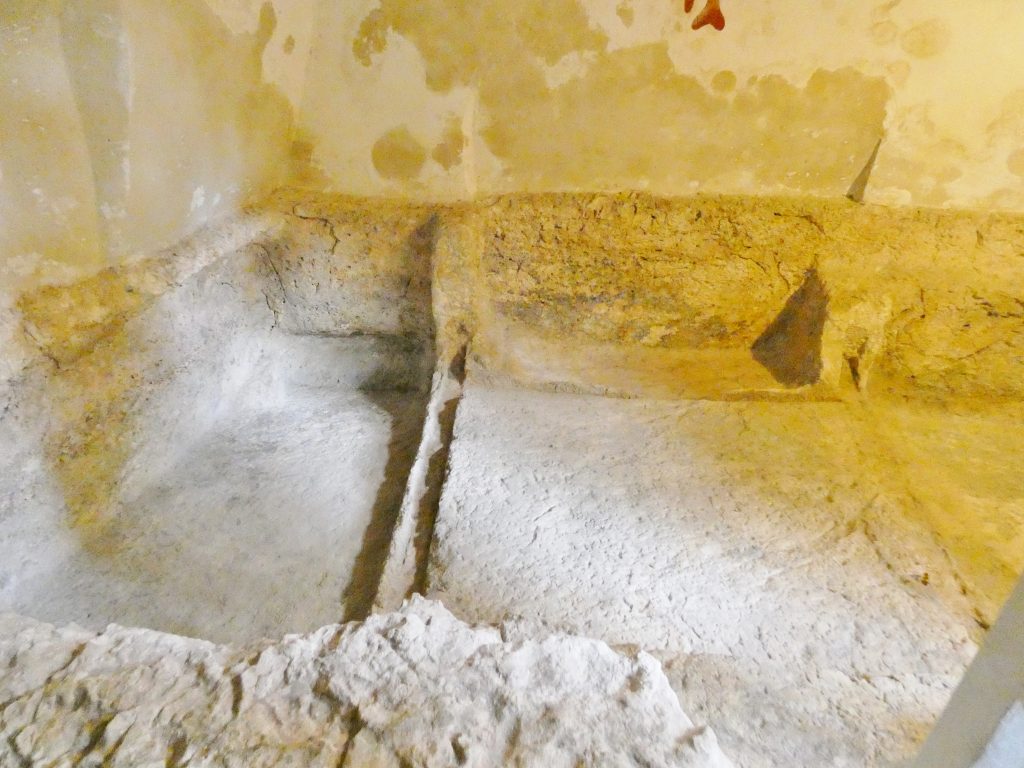
An additional Scriptural reference also seems to back up The Garden Tomb’s authenticity stating that it was a new family tomb, which had not yet been used. This coincides with the scripture of Matthew 27: 57 – 60:
“In the evening a rich man named Joseph of Arimathea, who had himself been a disciple of Jesus came. He went to Pilate and asked him for Jesus body…then Joseph took the body and wrapped it in a piece of clean linen and laid it in a new tomb that belong to him, that he had cut in the rock and he rolled a great stone over the doorway of the tomb and went away.”
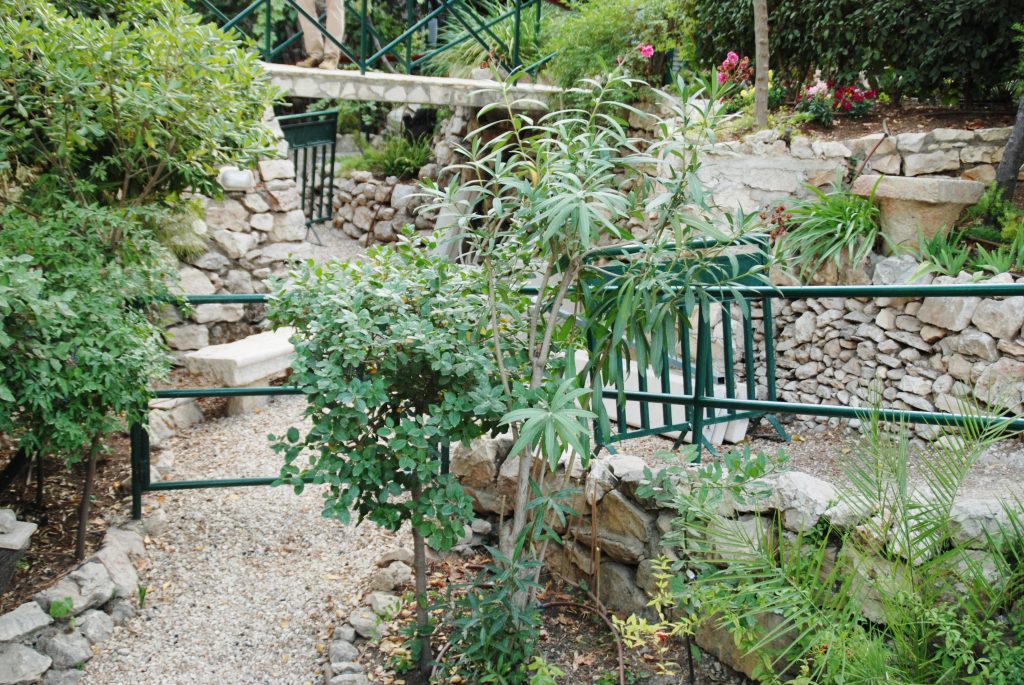
It would take centuries later to determine the age of the tomb when archaeologist Gabriel Barkay dated the site to the 8th – 7th centuries BC. His publication “The Garden Tomb” appeared in the Biblical Archaeology Review in 1986. Today the Garden Tomb (Jerusalem) Association provides oversight for the necropolis and its surrounding gardens. While the organization does not claim that this is the actual tomb of Jesus, they support its authenticity as a burial site at the time of His death.
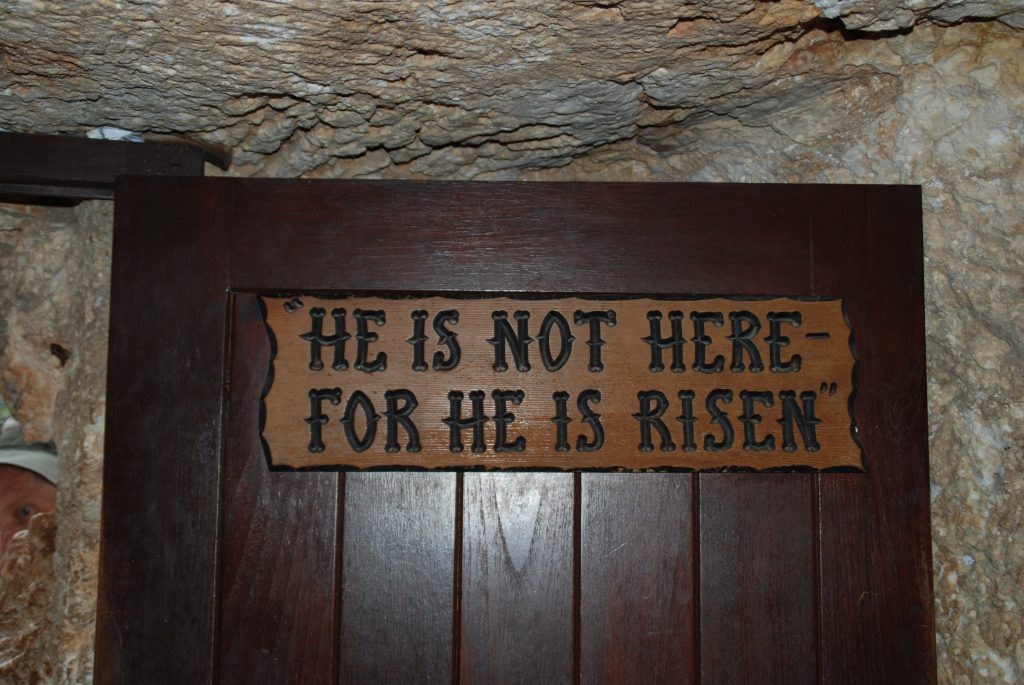
Regardless of the facts, the Garden Tomb provides a spectacular insight into the rock-cut tombs of the first century. With its surrounding gardens, Skull Hill and wine press, we can be certain of one thing. “He is Risen. He is Risen indeed.”
Happy Easter! Many thanks for reading about my visit to the Garden Tour on my amazing trip to Israel. Wishing you many Happy Travels!
What to See and What to Do:
The Garden Tomb
Conrad Schick Street
Jerusalem, Israel
Telephone: +972 2 539 8100
- Admission: There is no admission but donations are greatly appreciated.
- Hours: The Garden Tomb is open from 8 AM to 7 PM, Monday through Saturday.
- Travel Tip: Arrive early to avoid the tour crowds and dress appropriately for entering a holy site.
Where to Stay:
The Olive Tree Hotel, Royal Plaza Jerusalem
23 St. George Street
Jerusalem, Israel
Telephone: 972 2 5410410
Where to Eat:
The Olive Tree Hotel, Royal Plaza Jerusalem
23 St. George Street
Jerusalem, Israel
Telephone: 972 2 5410410
The Olive Tree Hotel has an amazing buffet provided for dinner with a well-rounded offering of Israeli dishes and world-wide cuisine.
What to Eat:
- Kubbeh is similar to falafal in that it is served in a ball but made with meat and spices then deep fried.
- Manqusheh is similar to pizza made with flatbread topped with olive oil and spice (usually za’atar which is similar to thyme)
- Ka’ak is a large pretzel like pastry that is usually eaten at breakfast time. Crunchy on the outside and soft on the inside, they are readily available at bakeries and roadside stalls.
- Potato swirls are similar to french fries, cut and deep fried.
- Qatayef is a pancake-style dessert stuffed with cheese, nuts or sugar and spices and are popular during the Ramadan holiday
- Kunafeh is a pastry similar to baklava covered in syrup and cheese
What to Read:
- Khirbet Khizeh by S. Y. Yizhar
- The Hilltop, by Assaf Gavron
- Dancing Arabs by Sayed Kashua
- The People of Forever are Not Afraid, by Shani Boianjiu
- Five Seasons, by A.B. Yehoshua
- Twenty-One Stories by S. Y. Agnon
- Suddenly, A Knock on the Door by Etgar Keret
- Apples from the Desert, by Savyon Liebrecht
- From the Four Winds, by Haim Sabato
- To the End of the Land, by David Grossman
- A Tale of Love and Darkness, by Amos Oz
Photo Guide for Israel:
- The Western Wall for a religious experience
- Jaffa’s Old Town for its charm
- The Dead Sea for its interesting topography
- Caesarea Harbor and its Roman architecture and history are worth a visit
- Arbel National Park and Nature Reserve provides a phenomenal view of the Sea of Galilee
- The Church of the Holy Sepulchre in Old City Jerusalem is said to be the burial location of Jesus
- The view of the Temple Mount from the Mount of Olives